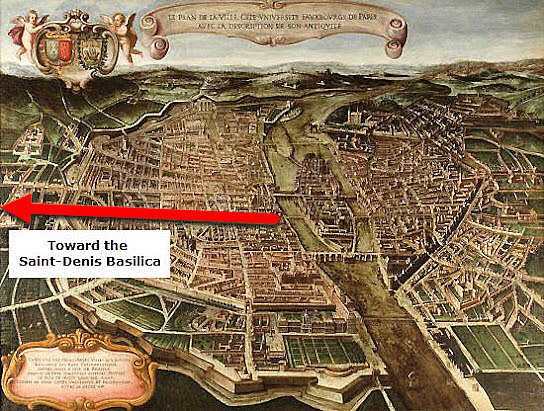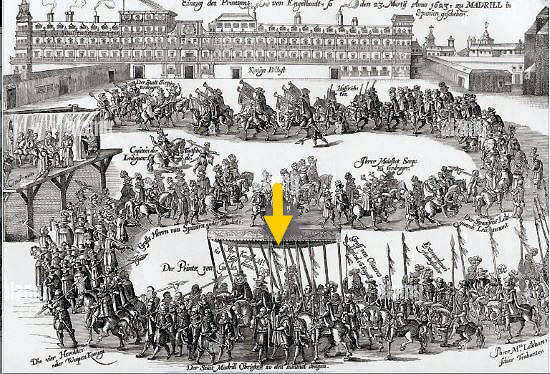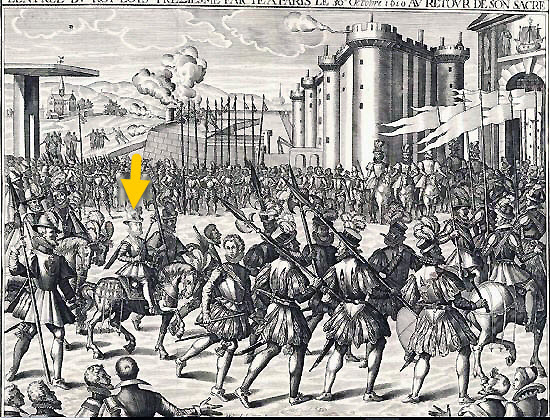MENU: 2.3. TRDE RTE FR PILGRMS & KINGS
"WE ARE NOT MAKERS OF HISTORY. WE ARE MADE BY IT"
-- Martin Luther King
Rue Saint-Denis was a minor trade route until relics of France's most important Christian martyr were deposited in a church near its route. Later the kings made the Saint-Denis Basilica their mausoleum.
(Relics, end of the third century; mausoleum, sixth century)
The religious and political importance of what had been a humble path became immense.
Plan of Paris, toward 1640, zoom
The very long rue way is made up of segments. All hark back to the past.
The red arrow shows our walk, the yellow one shows a site.
In brief


































